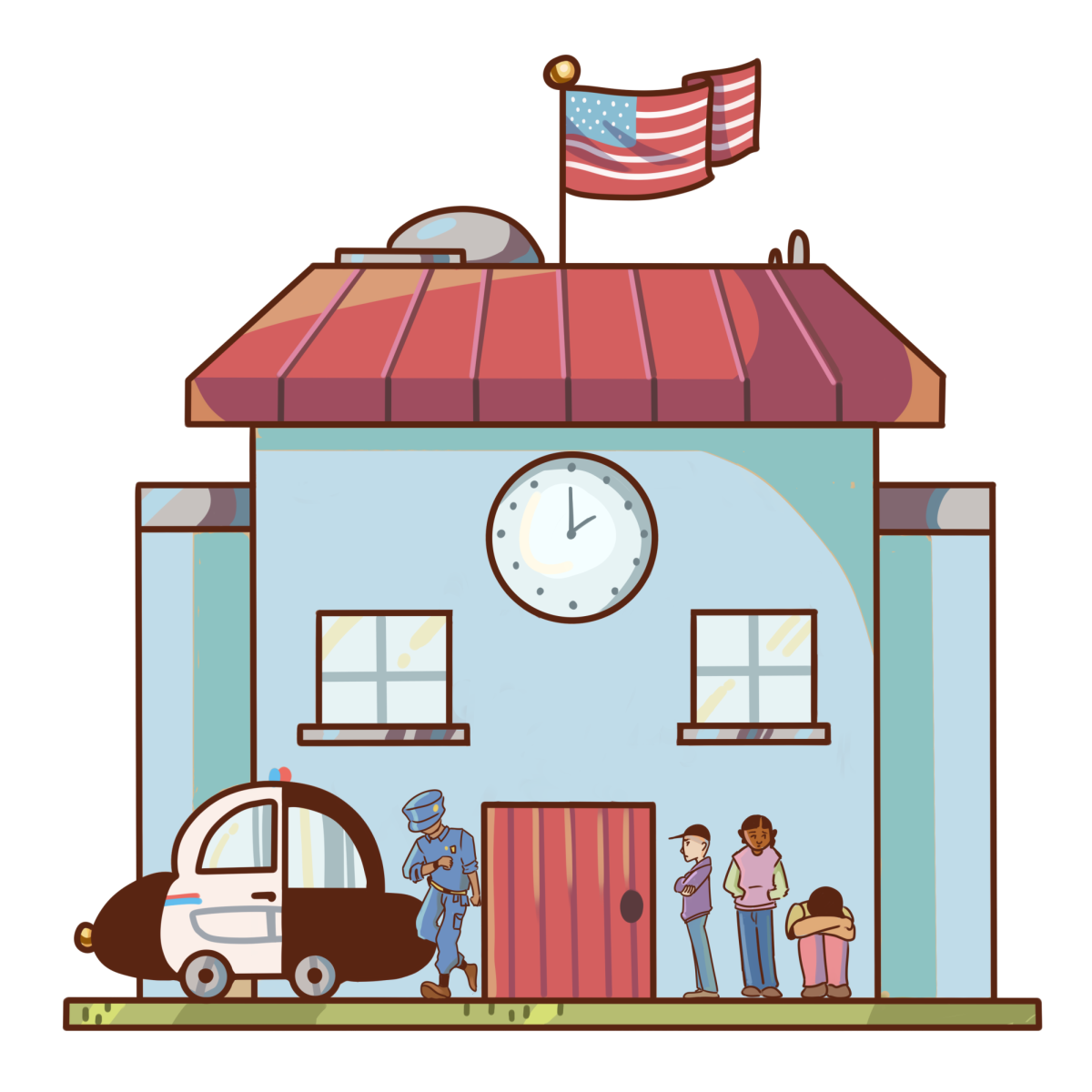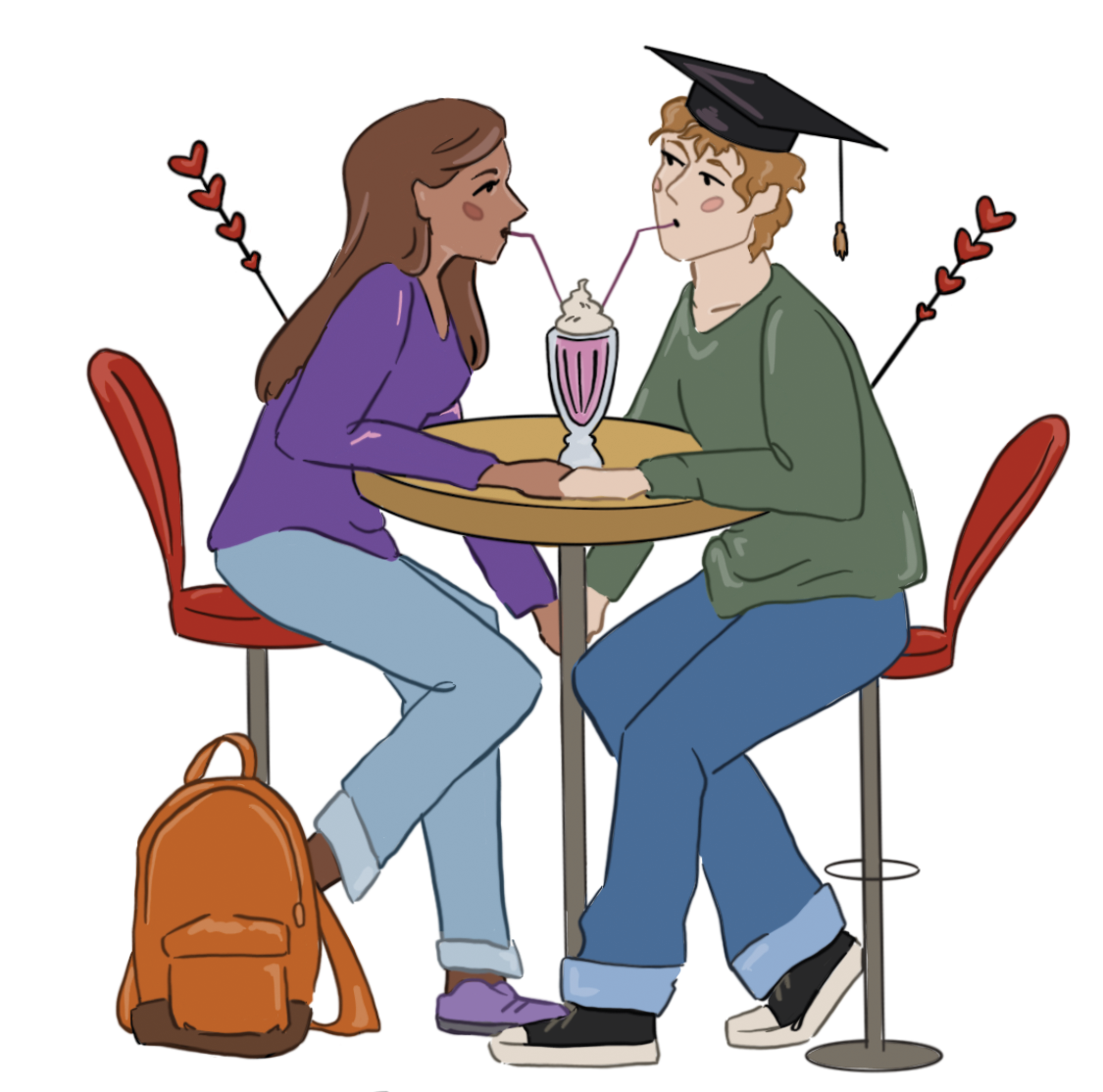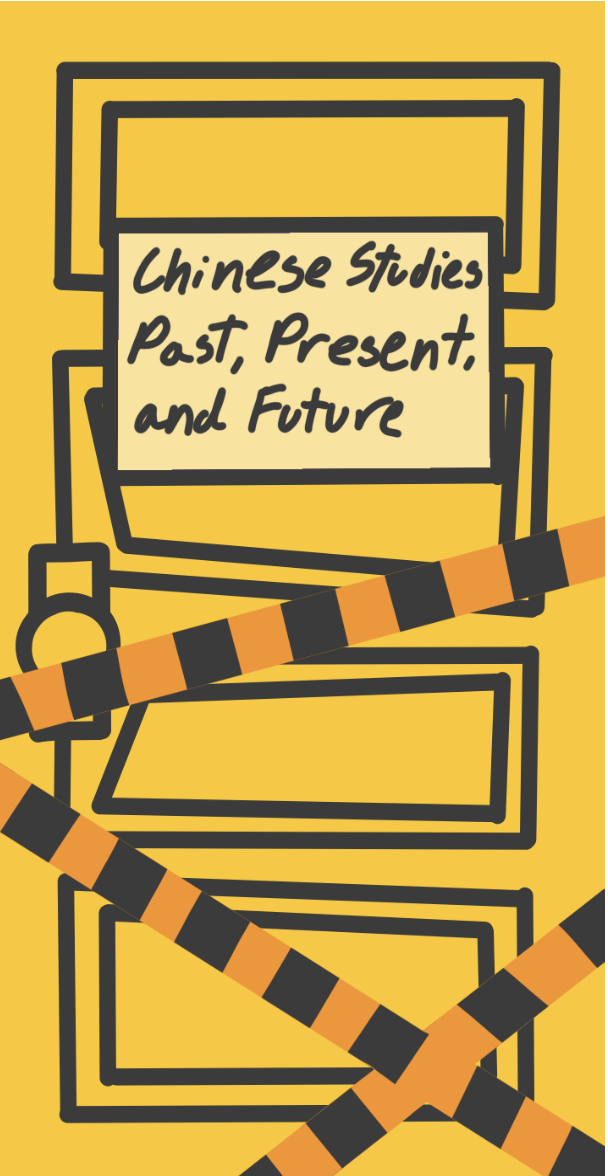Everyone is in Taper Gymnasium. It’s an all-school assembly, and students are packed on the bleachers: sophomores and juniors on one side of the gym, and seniors on the other. Head of Upper School Beth Slattery moves toward the microphone to make an announcement as the chatter dies down. Before she speaks, she surveys the room. There are two doors on either side of her that students could use to escape, and another set on the far side of the gym. She wonders how students would get down from the bleachers fast enough. It is a Wednesday morning, and as Slattery is making a routine speech, she is thinking about a potential school shooting. Slattery said these intrusive thoughts are deeply troubling.
“I resent the fact that [students] have to do shooter training and that I have to get alerts on my phone [about shootings],” Slattery said. “Every single time we are all together, I think about what I will do if someone comes through the door. It just makes me super angry that [students] have to live like that and that I have to live like that.”
Gun-related incidents are the leading cause of death among American children and teens according to the American Academy of Pediatrics. Following the Columbine High School massacre in 1999, gun violence in schools across the country rose exponentially. Columbine became a model for future attacks, with more than 357,000 students experiencing gun violence in school since, according to The Washington Post.
As the country experiences greater numbers of school shootings, students also have increased access to information about the shootings. Junior Prefect Gideon Evans ’25 said although seeing shootings occur at other schools can be alarming, he feels safe at the school.
“I feel this sense of community and connection at Harvard-Westlake,” Evans said. “I’m a part of something. I trust the people around me. I love the people around me and I’m glad to be here every day. Of course, there’s always that thought that [a school shooting] could happen, but I think the most important thing is knowing what kind of security team we have here and everybody who works here to protect us and to keep us safe.”
The school was one of the first high schools in the nation to implement shooter safety training directly after Columbine, according to Head of Security Jim Crawford. The school’s security team flew to Texas, where local police officers led one of the earliest high school shooting safety training sessions. Following the seminar in Texas, security implemented Alert, Lockdown, Inform, Counter and Evacuate (ALICE) training — an active shooter response training that focuses on counterattack and evacuation — for all grade levels.
In addition to teaching students protective measures, the security team studies every national school shooting to prevent a threat from ever occurring on campus. As ex-law-enforcement officers, the team receives information about past shootings. Crawford said security completes extensive research to ensure the highest quality training for students and faculty.
“We investigate every shooting that happens in our country and even look into the ones that happen [internationally],” Crawford said. “We track the periods of time when the school shootings are happening, school pressures and social media. We research all of those things. We train our guys and then students with that information. We take the best practices from the [Federal Bureau of Investigation (FBI)] and from other school shootings — what [security] did wrong, what they did right — and we tweak our program for the absolute best practices.”
As a new teacher, Upper School Math teacher Amy Stout said the school feels much safer than past schools she has worked at.
“When I’m here on campus, the guards we have seem pretty tough, so I feel safe here,” Stout said. “With the school I was coming from, the security was more lax, and there would be people shouting through the gates. In the back of my mind, I always knew where my scissors were in my classroom. I’d make sure I would pass them out to the students if I ever needed to.”
Shootings have heightened security nationwide, with schools in the U.S. spending an estimated $3.1 billion on security products and services in 2021, according to market research company Omdia. Slattery said the many challenges students have to deal with today were not on her radar when she was in high school, and they are only amplified by students’ access to social media.
“I grew up in a time when [school shootings] were unthinkable and you never worried about your safety in school,” Slattery said. “Growing up, I could read the newspaper or not read the newspaper, and I could watch the evening news or not watch the evening news. Whatever I read or watched was more objective. The way [social media] algorithms work is if you hover over something about school shootings long enough, they’ll give you more of the bad news.”
A mass shooting occurred in Lewiston, Maine at a bowling alley and restaurant, killing 18 people and injuring 13 on Oct. 25, according to CBS News. This shooting also caused many campuses in different parts of Maine to close down temporarily. Bates College, located in Lewiston between the bowling alley and restaurant, enacted a shelter-in-place order for over 24 hours following the shooting, according to WBUR. Bowdoin College, only 20 miles from Lewiston, ensured all school buildings were locked, requiring a key card to enter.
Evans said that he has noticed, in many cases, the shooter has undiagnosed or unregulated mental health issues, and it is important as a community to stop the problem at the source.
“We have to recognize that some people are dealing with [mental health] issues, and we have to try and prevent it before tragedies happen,” Evans said. “This isn’t a racial issue we’re dealing with. This isn’t a political issue we’re dealing with. This is a human issue. We have people who are struggling and think the only way to fix it is to hurt other people. We have to prevent that by helping those people and coming together.”
The school has increased its mental health resources this year by hiring new counselors. Slattery said she hopes all of the help available on campus will create a safe school environment.
“The biggest thing I’ve thought about is how [to] create an environment where people feel safe and feel a sense of belonging,” Slattery said. “I think our increase in counseling and in training for what to do if it did happen and our security presence are the sort of things that you do to make sure people don’t feel like [the school is] a target.”
When ALICE training first began, the security team showed a PowerPoint with pictures of past school shooters and conducted a realistic shooting simulation. Crawford said the old PowerPoint often made students paranoid because of how much the shooters looked like their fellow classmates, and training has become less emotional over the years.
“We had the pictures of the students that actually did these shootings, and they look like [students],” Crawford said. “Our school community was looking at this going, ‘He looks like so-and-so. She looks like so-and-so.’ We got away from the PowerPoint and wanted to do more hands-on training. We had a couple of students and even faculty that didn’t react well to the [first] training. The first training was really scary, and we had teachers crying and leaving the room. We scared a whole bunch of kids. We’ve changed the program over the past few years so it’s more of an educational thing.”
The threat of a shooting does not exist solely for students. Stout said as an educator, she feels more apprehension in sacrificing herself for her students due to the potential effect it would have on her own children.
“I always struggle as a parent,” Stout said. “How do I balance the responsibility to the kids in my classroom versus my kids at home? I have to make a decision to give up my life for my students. That’s the assumption [for teachers], and it’s harder when you have young kids of your own.”
While Americans can buy a gun in less than an hour, many nations require months of background check, according to The New York Times. Hannah Carbunaru ’24 said there needs to be more regulation on who can buy assault weapons to combat the exponential growth of school shootings.
“We definitely need to reform gun laws regarding how people are able to get guns,” Carbunaru said. “It’s so easy to walk into a gun store and just buy one. If you’re not in an issue where you need a gun to protect yourself, then you shouldn’t need to carry it around.”
Slattery said the issue of guns is continuously growing and needs to be addressed as it directly relates to the Second Amendment.
“I’m not opposed to people owning firearms, but I do think that we have prioritized the Second Amendment over the safety of humans,” Slattery said. “I don’t believe that there’s nothing we can do about the easy access of automatic weapons and the fact that we allow that to happen in this country. I’ve never understood why we don’t try. I don’t think that the Second Amendment was intended to allow people to have automatic weapons. It wasn’t something the Founding Fathers were thinking. The words ‘well-regulated militia’ are in there and right now, it feels barely regulated.”







































